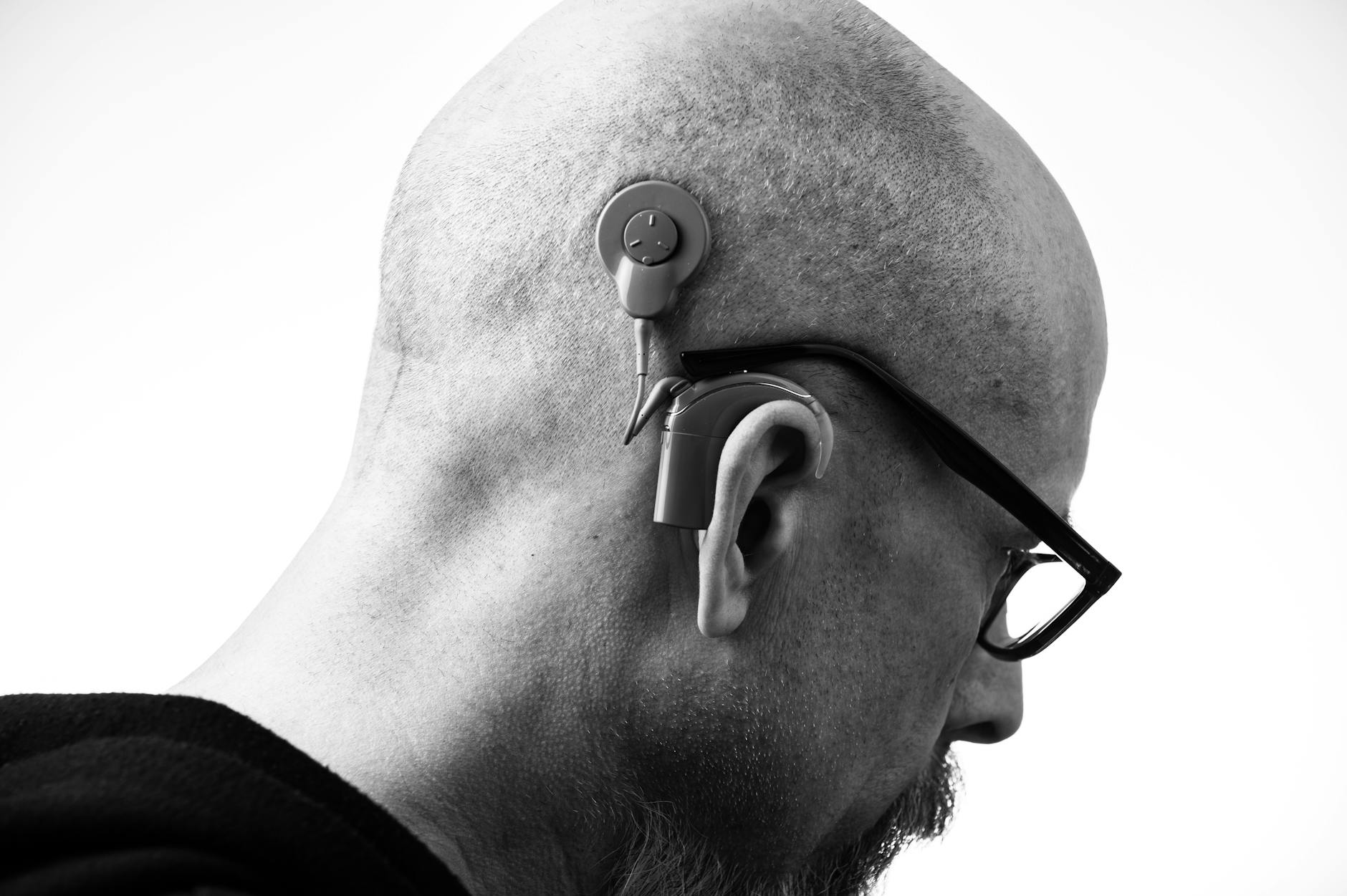Lede: If your hearing aids make guitars sound like kazoos and pianos like toy keyboards, you are not alone. Most aids are tuned for conversation, not Coldplay. The good news: with a few smart tweaks and the right expectations, music can feel warm, full, and spine-tingling again.
Why music is hard for hearing aids (and how to make it easier)
Hearing aids are little marvels designed first for speech. Speech is predictable: most energy sits below ~4 kHz, volumes swing gently, and we prize clarity over warmth. Music is the opposite—wide frequencies, big dynamics, sustained harmonics, and intentional distortion (hello, electric guitar). So the very features that polish speech can rough up music.
Here are the usual culprits when music sounds thin, warbly, or harsh:
- Compression that squashes crescendos. Wide Dynamic Range Compression (WDRC) squeezes loud and soft sounds closer together so conversation feels even. Great for voices. Not great for a symphony.
- Input clipping. Microphones and preamps in aids may distort when a live band or church organ gets loud. Once clipped, detail is gone.
- Noise reduction and directionality. These are tuned to treat steady signals as "noise." Sustained notes can get smeared or pulled down.
- Feedback cancellation artifacts. Anti-whistle systems can misread pure tones as feedback and wobble them.
- Frequency lowering. Helpful for speech consonants, but it can bend the timbre of violins and cymbals in odd ways.
- Streaming bandwidth limits. Bluetooth codecs may cap high frequencies and dynamics compared to true hi‑fi.
None of this means you can’t love music again. It just means you need a different playbook than your Conversation program.
Your dedicated Music program: what to ask for
Most modern hearing aids include a Music mode, but it’s often a template. Ask your audiologist to build a personalized Music program and verify it with you listening to your music at safe, realistic levels.
Settings checklist for fuller, cleaner sound
- Compression: Use lower compression ratios with slower attack/release times. Preserve dynamics so crescendos breathe.
- Input headroom: Enable any option that increases the input dynamic range or "music input" handling. This reduces clipping at concerts or rehearsals.
- Noise reduction: Turn off or minimal. Music isn’t noise. Let the harmonics live.
- Directionality: Set microphones to omnidirectional for a natural soundstage, unless you specifically want to focus on one source.
- Feedback cancellation: Use a music-friendly or low-aggressiveness setting to avoid pitch warbles. If feedback occurs, adjust fit/venting first.
- Frequency lowering: Consider off in Music. If high‑frequency hearing is severe, a gentle, well-tuned setting may help; evaluate by ear.
- Bandwidth: Ask for the widest bandwidth available that matches your hearing loss and comfort.
- Loudness comfort: Verify that peaks feel exciting but not sharp. You should feel enveloped, not assaulted.
Bring sample tracks you know well (acoustic guitar, jazz trio, your choir’s recording, a pop track). Your brain recognizes familiar timbre and balance faster than test tones.
Live music vs. streaming: play to each strength
Live music
- Positioning beats processing. For concerts, move away from the PA stacks, aim for a line of sight to performers, and avoid being in front of subwoofers.
- Use the Music program. Keep the speech program for intermission chit-chat. Many aids let you switch with a tap.
- Watch the input level. If a venue is very loud, even aids in Music mode can clip. Small, high-fidelity musicians’ earplugs (custom or high-quality universal, 9–15 dB) can tame levels while keeping the spectrum intact.
Streaming music
- Codec realities. Phone-to-aid streaming compresses audio and may roll off ultrahighs. It can still sound great, just not studio-master great.
- Disable call-specific processing. Make sure your aids don’t apply phone-call filters to music. Some apps let you pick a "Music streaming" profile.
- Equalization. Use your phone’s EQ lightly. Boosting a little bass and brilliance can round out the sound, but big EQ swings can trigger compression or distortion.
Pro tip: If you’re pursuing true hi‑fi at home, consider pairing an external streamer or TV audio transmitter your audiologist recommends and tune a separate "Home Music" program. Then, do a short listening session together to lock it in.
Headphones with hearing aids: what actually works
Yes, you can wear headphones with hearing aids, but choose wisely.
- Over‑ear (circumaural) headphones: Often the best with behind‑the‑ear aids. Look for large, cushy earcups that don’t press on microphones, and start with moderate volume. Bring your headphones to your fitting for live testing.
- On‑ear headphones: Can press on aid mics and cause feedback—less ideal.
- In‑ear earbuds: Usually clash with receiver-in-canal or in-the-ear aids. Skip unless you remove your aids briefly (not ideal for conversation or safety).
- Bone conduction: Leaves ears open; can be comfortable with aids for casual listening, but fidelity is limited.
When using headphones, stick with your Music program. If you hear hiss, pumping, or warble, lower the headphone volume first, then adjust the aids. Feedback? Reposition the headphones so they don’t seal and trap sound near the microphones.
Play an instrument? Here’s your game plan
Instrumentalists and singers have special needs. You’re not just listening; you’re producing sound and monitoring subtle feedback loops from your body and the room.
- Two programs: Have a "Practice/Stage" Music program and a "Talk between songs" program. Easy switching is key.
- Self‑voice and occlusion: If your own voice or instrument booms in your head, ask about venting options or a slightly more open fit for your Music program to reduce the occlusion effect.
- Monitor smart: If you use in‑ear monitors, work with your audiologist on level limits and a balanced mix. Protect your residual hearing first.
- Recording and line-level inputs: For keyboardists or DJs, if a mixer is available, feeding clean audio to a compatible streamer can sound smoother than mics in a loud room.
And yes—bring your instrument to the clinic if practical. A quick play-through during fitting reveals issues speech tests won’t catch.
Keep your ears safe without killing the vibes
You can love music and protect your hearing. Both are possible.
- Know the levels. Prolonged exposure above roughly 85 dB can raise risk for hearing damage, and live shows frequently exceed that. Shorten time near the stage, take breaks, and use protection when needed.
- Carry musician’s earplugs. They keep music’s spectrum more intact than foam plugs. Custom options are comfortable for long sets.
- Mind the daily dose. If you mow the lawn and then go to a club, your ears don’t forget the lawn. Think of your sound exposure as a daily budget.
If you’re unsure what’s safe, ask an audiologist to walk you through safe listening strategies for your favorite venues.
Troubleshooting: quick fixes for common music complaints
- “It sounds thin.” Add a touch of low‑mid (200–500 Hz) and high‑treble (6–8 kHz) in the Music program; widen bandwidth; reduce compression. Check that frequency lowering is off.
- “It’s harsh/too bright.” Soften 2–4 kHz slightly; verify input isn’t clipping; reduce high‑frequency gain just a notch in Music only.
- “Notes wobble or warble.” Lower the aggressiveness of feedback cancellation or switch to a music-friendly algorithm; minimize noise reduction.
- “It pumps up and down.” Slow the attack/release times; reduce noise reduction; ensure the microphones are set to omni.
- “Loud gigs distort.” Use musician’s earplugs to drop input level; increase input headroom if the device supports it; position away from speakers.
Small adjustments often make big differences. Keep changes tied to the Music program so your great speech settings stay great.
Bring this to your audiologist: a one‑page plan
Make your visit hands-on. Here’s a simple checklist to print or save:
- Listening goals: streaming at home, live jazz club, church choir, rock concerts, instrument practice.
- Devices: current hearing aids, any streamers or TV transmitters, and the headphones you plan to use.
- Music samples: 3–5 favorite tracks that show what you want (warm vocals, crisp cymbals, acoustic realism).
- Programs to create: Music (general), Music – Streaming, Music – Practice/Stage, and Talk/Intermission.
- Tuning requests: lower compression, slower time constants, minimal noise reduction, omni mics, music‑friendly feedback control, frequency lowering off (evaluate by ear), widest comfortable bandwidth, maximize input headroom.
- Verification: listen together at realistic volumes; fine‑tune with your tracks; quick Real‑Ear check if available to confirm targets aren’t overshooting comfort.
- Safety plan: how to use musician’s plugs, where to sit/stand at venues, what "too loud" feels like, and when to take breaks.
Tip: Schedule a follow‑up after a week of real-world listening. Keep quick notes on what delighted you and what bugged you; those notes are gold for fine‑tuning.
Realistic expectations (and real joy)
Hearing aids won’t turn into studio headphones, and that’s okay. Their superpower is restoring access—to melody, rhythm, and shared moments. With a dedicated Music program, a few gear tips, and ear‑smart habits, most people report a dramatic upgrade from tinny to tasty.
If you’re struggling, loop in an audiologist who enjoys music. The right partner makes this fun. Your playlist—and your future self at the concert—will thank you.
Further Reading
- OTC Hearing Aids, Done Right: Self‑Fit, Save, and Know When to Get Help (Hearing Aids) - Tinnitus Relief With Hearing Aids: What Actually Helps (And How to Set Yours Up Right) (Hearing Aids) - Your Phone, a Super Mic: Cleaner Conversations with Remote Microphone Mode (Technology) - Self‑Fitting Hearing Aids, Demystified: How OTC Tech Tunes to Your Ears (and When to Get Help) (Technology)Frequently Asked Questions
Why does music sound worse than speech with my hearing aids?
Aids are optimized for speech clarity, not music’s wide frequency range and big dynamics. Features like strong compression, noise reduction, directionality, and aggressive feedback cancellation can smear sustained notes or flatten crescendos. A dedicated Music program with gentler processing and more input headroom usually fixes most of it.
Are over‑ear headphones safe to use with hearing aids?
Yes. Over‑ear headphones that fully surround the ear often work well with behind‑the‑ear aids. Keep volumes moderate, start with your Music program, and bring the headphones to your audiologist to test fit, feedback risk, and sound. On‑ear models can press on microphones and cause whistling.
Can concerts damage my hearing even if I wear hearing aids?
Yes. Hearing aids don’t function as hearing protection. Loud venues can exceed safe levels for your ears and the aids’ microphones. Use high‑fidelity musician’s earplugs when shows get loud, take listening breaks, and position away from speakers. Ask an audiologist for a personalized protection plan.
Do over‑the‑counter (OTC) hearing aids work well for music?
Some OTC devices include a Music mode and can sound good for mild hearing loss, especially for streaming at home. For live music and more complex losses, custom programming by an audiologist typically provides better dynamics, less distortion, and safer listening.



